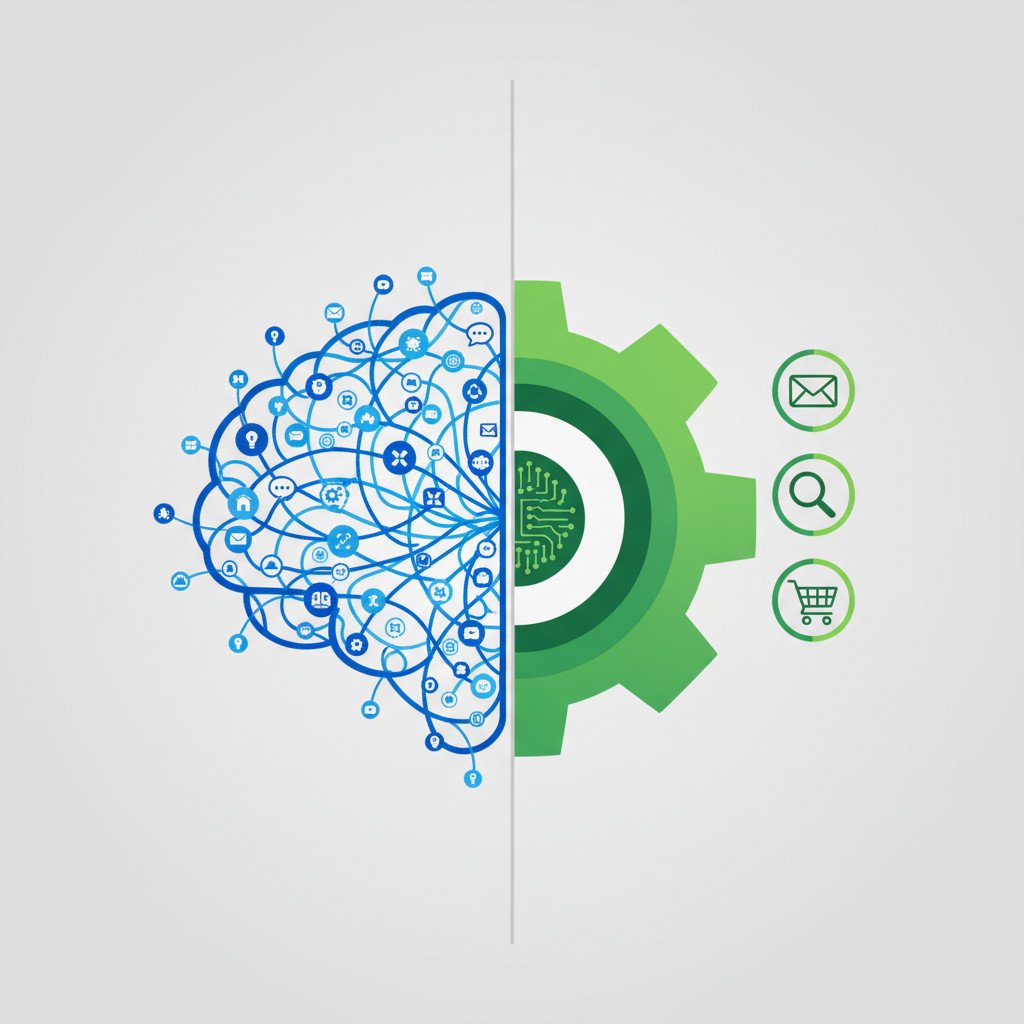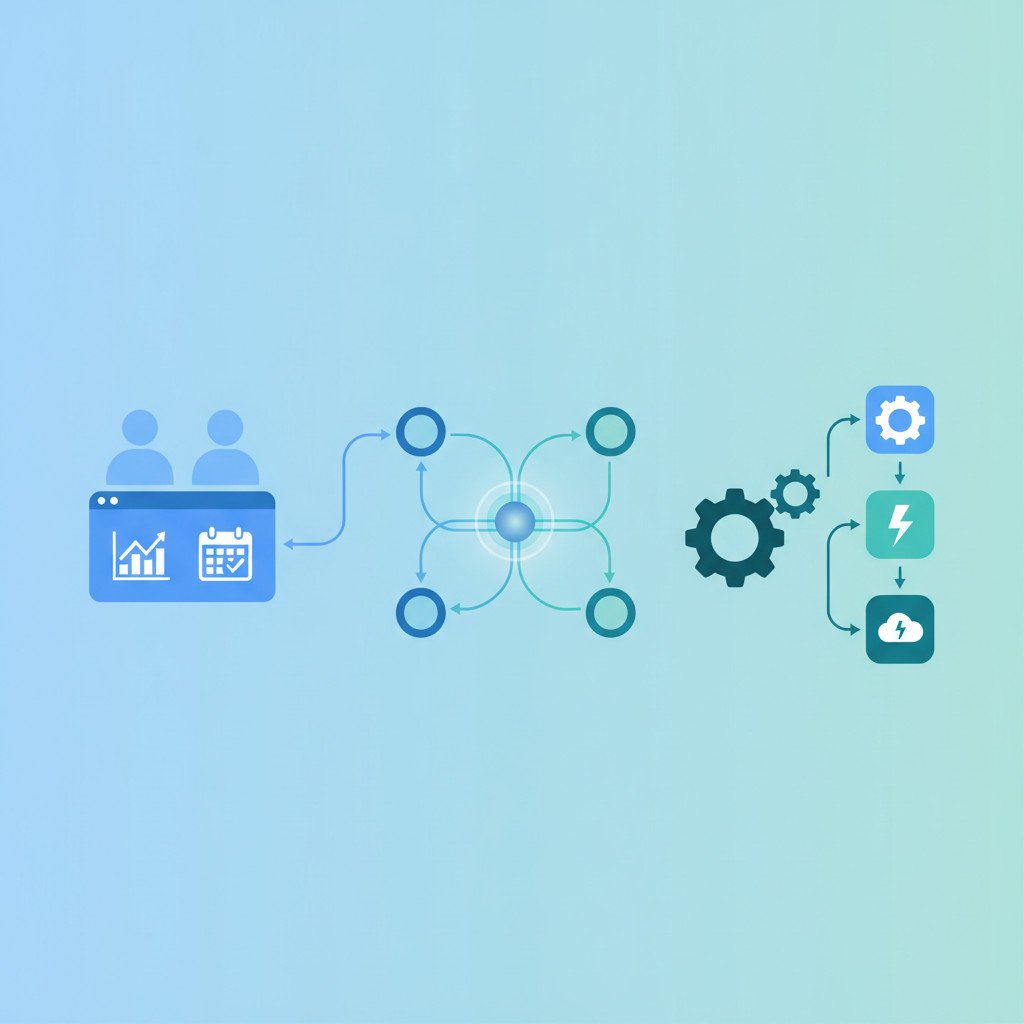AGI vs AI: Understanding the Differences and Implications
AGI vs AI matters because the technologies mean different risks and rewards for companies and builders. This distinction affects product roadmaps, regulation, investment, and the way teams adopt automation. Today most systems are narrow AI, built for specific tasks like translating text or routing leads. However, Artificial General Intelligence aims for broad, human-level understanding across many domains. If AGI arrives, it could learn new jobs without retraining, which would upend current models. Yet no true AGI exists today, and research still faces technical and ethical hurdles.
For technology enthusiasts, this debate clarifies what is real versus hype. For business leaders, understanding scope helps prioritize investments and manage risk. Therefore, knowing the difference between domain-general AGI and task-focused AI matters now. In this article, we demystify both concepts, outline capabilities and limits, and offer practical next steps. We strike a cautious, balanced tone because the future matters more than the headlines. Read on to learn what organizations need to know today and tomorrow.
What is AGI vs AI?
Artificial Intelligence or AI refers to systems that perform tasks that normally require human intelligence. For example, recommendation engines, email drafting tools, and chat bots analyze data and act on it. Most AI today is narrow AI. It focuses on specific domains and repeatable tasks. As a result, it delivers great value for search, customer support, and automation.
Key traits of AI
- Task specific performance that often requires large labeled data sets
- Optimized for one domain such as language, vision, or recommendation
- Requires retraining or fine tuning to take on new jobs
- Produces measurable improvements in efficiency and accuracy
- Examples include chat models, image classifiers, and automation workflows
AGI explained and Key Differences in AGI vs AI
Artificial General Intelligence or AGI means domain general understanding and flexible learning. AGI would reason and learn across many fields without task specific retraining. However, no system today meets that standard. Researchers still debate methods, timelines, and safety. Because AGI would combine reasoning, planning, and transfer learning at human level, it changes how we think about risk and governance.
Key traits of AGI
- Human level reasoning across varied contexts
- Ability to transfer knowledge from one domain to another
- Learns new tasks with minimal additional data
- General problem solving and long term planning
- Still a theoretical possibility rather than an existing product
Concrete examples that highlight the difference
Consider a spam filter versus a house helper. The spam filter knows how to flag unwanted mail. It performs that one job very well because it was trained for it. By contrast, a hypothetical AGI could learn to cook, fix a leaky sink, and troubleshoot the network without bespoke training. Therefore the scope and flexibility differ dramatically.
For business leaders this distinction matters. If you want pragmatic guidance on executive priorities, see this piece for leaders. If you are exploring how AI agents boost brand presence, read this case study on AI driven brand awareness. For infrastructure and integration strategies, this article explains enterprise level AI advantages.
Related keywords include narrow AI, domain general, artificial intelligence, transfer learning, and automation.

AGI vs AI: Technical and Operational Differences
At the core AGI vs AI differ by scope and engineering. Narrow AI targets defined tasks. AGI aims for flexible, cross domain intelligence. Below we explain the technical gaps and operational implications.
Model architecture and representation
Modern AI uses specialized architectures like transformers. These models encode patterns for language, vision, or signals. For example, transformer models power many large language systems. However they remain task focused and require dataset specific tuning.
By contrast AGI would rely on architectures that support continual learning, causal reasoning, and symbolic grounding. AGI designs would integrate memory, meta learning, and multi modal perception. Therefore AGI research often blends neural and symbolic methods.
Training methods and data needs
- AI typically uses supervised or self supervised learning on narrow datasets
- AI systems need large labeled corpora and heavy compute for each domain
- AI models undergo fine tuning to move between tasks
- AGI would use few shot or zero shot transfer at scale
- AGI would prioritize sample efficient learning and lifelong adaptation
- AGI would learn from sparse feedback and real world interaction
Learning paradigms and adaptability
Current AI improves via retraining, transfer learning, and fine tuning. In practice teams retrain models for new tasks. As a result deployments require versioning, monitoring, and maintenance.
AGI, in theory, would adapt online. It would generalize knowledge without exhaustive retraining. Consequently AGI demands new safety controls and runtime governance.
Memory, reasoning, and planning
- Narrow AI often uses short context windows and statistical pattern matching
- Narrow systems struggle with long term planning and causal inference
- AGI would incorporate persistent memory and hierarchical planning
- AGI would perform causal reasoning and multi step problem solving
Compute, evaluation, and benchmarks
AI research uses benchmarks like GLUE or ImageNet to measure progress. However benchmarks often overfit specific skills. As a result they overstate generalization.
AGI evaluation would require open ended tests across diverse tasks. For that reason researchers propose multi domain, life like challenges. For more on multi domain agents see DeepMind research and broader preprints on arXiv for technical context.
Examples and practical distinctions
- Current AI examples include recommendation engines, conversational agents, and image classifiers. These systems power search, customer support, and automation.
- Theoretical AGI potentials include a single agent that learns robotics, code, and strategy without task specific retraining.
In short AGI vs AI separates breadth from specialization. Therefore organizations should plan today for narrow AI adoption, while monitoring AGI research and safety developments.
Quick comparison table: AGI vs AI
| Feature | AGI | AI |
|---|---|---|
| Capability | Human level, domain general problem solving across tasks | Specialized performance on defined tasks |
| Learning approach | Continual, few-shot, meta learning, causal reasoning | Supervised, self-supervised, fine tuning |
| Adaptability | Online adaptation, transfer without retraining | Requires retraining or fine tuning per task |
| Scope | Broad, multi domain, long-term planning | Narrow, single domain, short-term goals |
| Current applicability | Theoretical; research prototypes and simulations | Widely deployed in products and enterprise workflows |
| Examples | Hypothetical agents that learn robotics and code from scratch | Recommendation engines, chatbots, image classifiers |
| Evaluation | Open-ended, multi domain benchmarks and safety tests | Task benchmarks like GLUE, ImageNet, custom KPIs |
| Governance and risk | Requires new safety, control, and alignment frameworks | Focus on bias mitigation, model ops, compliance |
AGI vs AI: Potential applications and societal impacts
Narrow AI already changes how businesses operate. For example, marketing teams use models to personalize ads and automate content. Sales teams rely on lead scoring and email automation to increase conversion rates. Moreover operations teams use automation platforms to connect apps and orchestrate workflows. As a result, companies cut repetitive work and scale processes faster.
Practical AI applications for business
- Personalized marketing and real time ad optimization
- Automated email drafting and customer support chatbots
- Lead scoring, CRM enrichment, and sales forecasting
- Workflow automation across apps and systems using no code tools
- Image classification for quality control and content moderation
- Decision support tools that surface insights from large data sets
AGI would change the rules of automation. If AGI arrives, a single agent could learn multiple roles. For instance, one system might write code, design campaigns, and manage supply chains. Therefore AGI could compress project timelines and enable rapid experimentation. However AGI also raises governance and safety questions that are different from narrow AI.
Potential AGI applications and benefits
- Cross domain automation that removes task boundaries
- Autonomous research assistants that propose and test hypotheses
- Advanced robotics for logistics, construction, and care services
- Real time systems management for complex infrastructure
- Hyper personalized education and lifelong learning platforms
- Faster product innovation through automated prototyping
Societal impacts and risks
AGI vs AI brings economic and ethical trade offs. For example, narrow AI already displaces repetitive jobs. Still it also creates new roles in data labeling, model ops, and oversight. By contrast AGI could disrupt knowledge work at scale. Consequently policymakers must balance innovation with worker protections. Moreover privacy, security, and concentration of power become greater concerns.
Actionable implications for leaders
- Invest now in narrow AI that delivers measurable ROI
- Build governance, monitoring, and model audit capabilities
- Upskill teams to work alongside intelligent systems
- Design infrastructure that supports modular AI components
- Monitor AGI research and prepare scenario plans for governance
In short, narrow AI offers practical gains today. Meanwhile AGI remains theoretical but transformative. Therefore smart leaders should adopt proven AI while planning for wider change.

Challenges and ethics in AGI vs AI
Both narrow AI and hypothetical AGI raise hard technical and ethical questions. For businesses and regulators the stakes include safety, fairness, and economic disruption. As a result leaders must balance innovation with responsibility.
Control and alignment
AI systems can behave unpredictably when deployed at scale. Moreover complex models can amplify small errors into large failures. Therefore researchers focus on alignment, which ensures systems follow intended goals. For more on executive priorities around this divide, see this article for leaders here.
Bias, fairness, and transparency
Models inherit biases from their training data. Consequently they can reproduce and amplify social harms. Companies must audit pipelines and datasets. In addition teams should document limitations, and provide transparent explanations when possible. For marketing and brand use cases, learn how AI agents affect brand trust here.
Job displacement and economic risk
Narrow AI already automates repetitive tasks. However AGI could change knowledge work at scale. Therefore organizations should plan reskilling and social safety measures. Meanwhile policymakers must design transition supports and redistributive policies.
Security, privacy, and concentration of power
Large models can leak data or enable powerful surveillance. As a result firms must enforce privacy safeguards. In addition cloud concentration raises systemic risk. To understand infrastructure implications, read this enterprise integration piece here.
Key ethical issues summary
- Control and alignment to prevent unintended behavior
- Data bias and fairness across demographics
- Transparency, explainability, and user consent
- Job displacement and transition planning
- Privacy, data security, and model leakage
- Centralization of compute and market power
Practical governance steps
- Build model governance and audit trails early
- Implement human in the loop controls for critical flows
- Monitor performance with real world validation datasets
- Invest in workforce retraining and change management
- Collaborate with regulators and standards bodies, for example UNESCO on AI ethics here
These actions reduce risk and build trust. Ultimately ethical AI governance starts with clear goals and accountable teams.
AGI vs AI: Future outlook and realistic expectations
The next decade will bring steady progress in AI, but AGI remains uncertain. Researchers will push on scaling, efficiency, and safety. As a result, practical systems will keep improving task performance and integration with business workflows. Meanwhile academic labs and startups will experiment with architectures that better support lifelong learning and reasoning.
Trends to watch
- Scaling and multimodality: Models will handle more modalities, such as vision, code, and speech together. As a result they will provide richer context and more useful outputs.
- Sample efficient learning: Researchers focus on few shot and unsupervised methods. Consequently models will need less labeled data to adapt.
- Continual and online learning: Systems will learn from ongoing feedback and real time interaction. This reduces retraining costs for many applications.
- Safety and alignment research: Teams will develop stronger alignment methods and formal verification. Therefore governance frameworks will mature alongside capability gains.
- Edge and specialized AI: Expect more domain specific models that run near data sources. Thus latency, privacy, and cost will improve for many use cases.
What organizations can expect
Enterprises will adopt increasingly capable narrow AI tools. These tools will automate more workflows, integrate across apps, and augment knowledge workers. For example, marketing automation will gain better personalization. Sales teams will get smarter forecasting and playbooks. Meanwhile operations will rely on AI in monitoring and issue resolution.
AGI prospects and caveats
AGI research will continue in multiple directions, including neuro symbolic methods and meta learning. However a reliable timeline for true AGI does not exist. Experts debate feasibility, safety, and control. Consequently organizations should plan for scenarios rather than certainties.
Practical advice
- Focus on ROI driven AI today and measure impact
- Invest in data hygiene and model monitoring for scale
- Build governance and safety practices now to reduce risk
- Track AGI research and participate in standards discussions
In summary, narrow AI will deliver tangible gains this decade. At the same time, AGI research may yield breakthroughs that change long term planning. Therefore stay pragmatic, invest wisely, and prepare governance for future shifts.
Conclusion
AGI vs AI represents a practical difference in scope and impact. Narrow AI delivers targeted automation today, while AGI remains a long term, domain-general goal. Therefore organizations should adopt pragmatic AI strategies and prepare for broader research outcomes.
In short, narrow AI boosts efficiency, scales workflows, and augments teams. Meanwhile AGI promises more radical change if it arrives. However that future requires careful governance, safety work, and scenario planning.
EMP0 is a US based company focused on sales and marketing automation. Moreover it offers AI and automation solutions that help businesses grow. Key offerings include:
- Content Engine for automated content creation and personalization
- Marketing Funnel to design and optimize customer journeys
- Sales Automation for lead routing, follow up, and CRM workflows
- Retargeting Bot for behavioral ad and engagement automation
- Revenue Predictions to forecast and prioritize deals
EMP0 uses proprietary AI tools and secure deployment under its infrastructure. As a result teams gain enterprise grade controls, privacy safeguards, and measurable ROI. Finally, balance opportunity with responsibility. Move quickly on proven AI, while monitoring AGI research and building governance.

